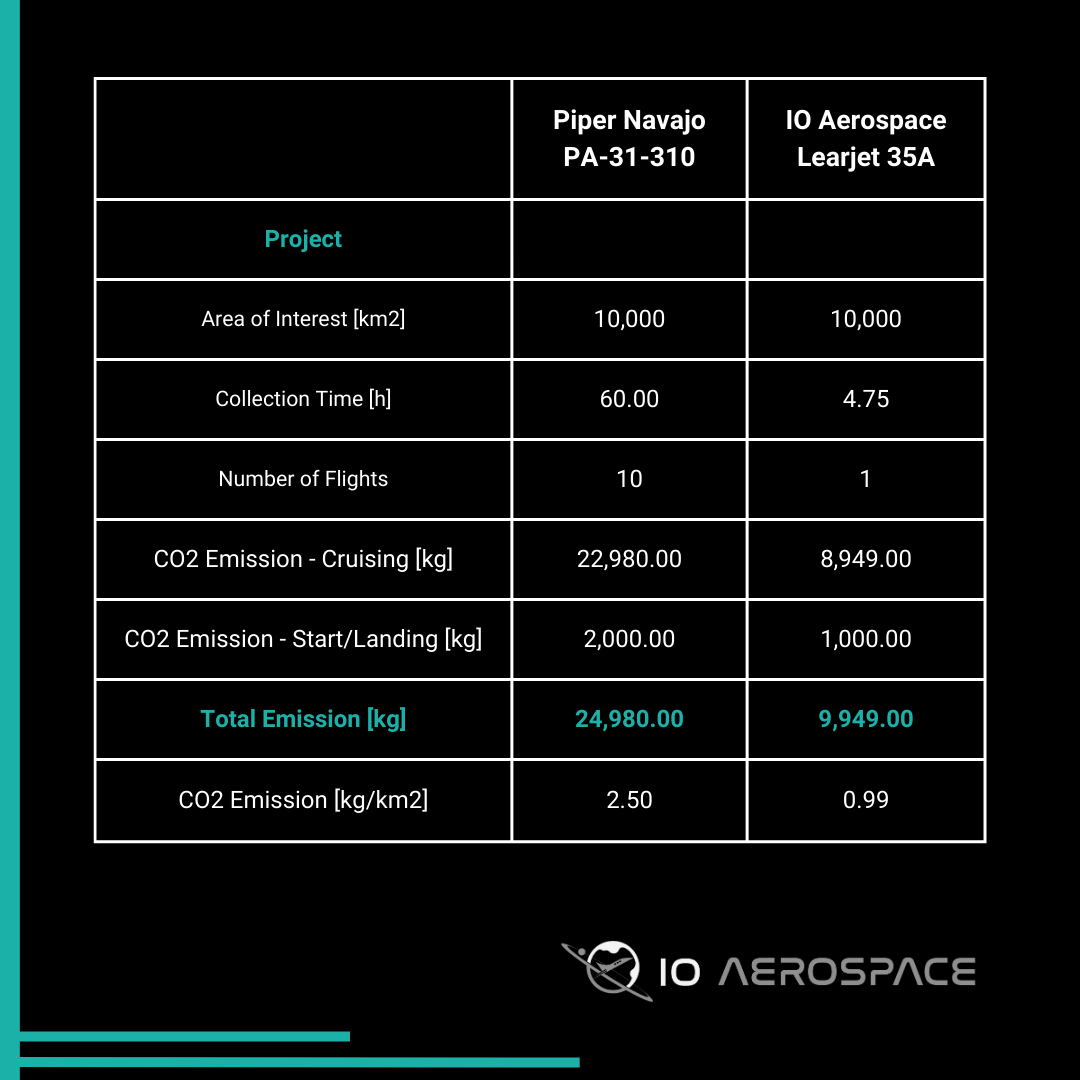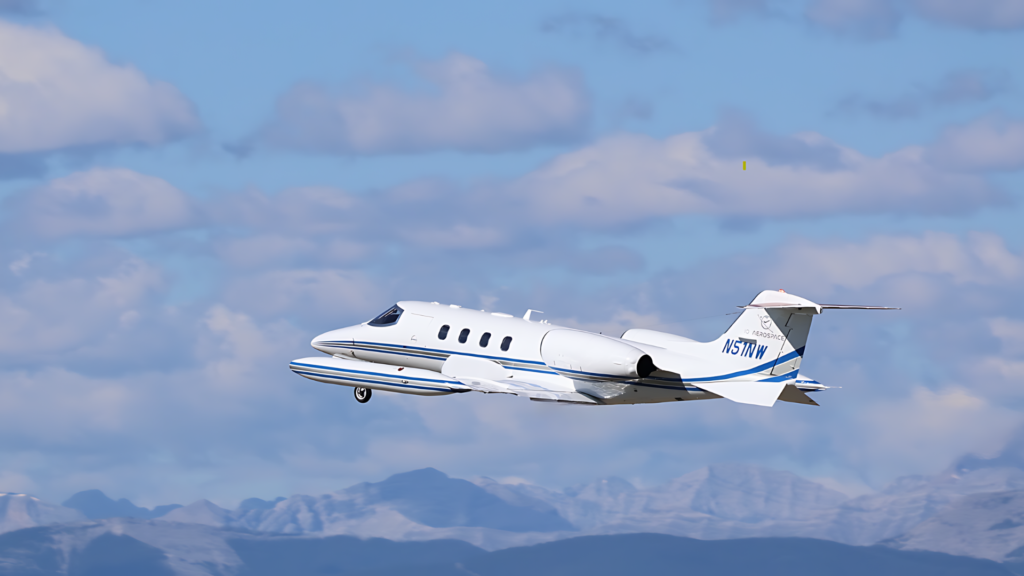
Airborne remote sensing is often criticized for its role in contributing to global CO2 emissions, as aviation, in general, is considered a key driver of climate change and greenhouse gas production. Although the environmental footprint of airborne remote sensing is small compared to commercial and cargo aviation, it remains important for the industry to be cognisant of and actively work to reduce its carbon footprint. Selecting the right aircraft and understanding its environmental impact is crucial for achieving mission goals.
Aircraft Selection Shapes Environmental Impact
Traditionally, in airborne remote sensing, propeller-driven planes like the Piper Navajo, Cessna 210, and King Air are common aircraft for data acquisition, mapping, and surveillance tasks. This is, in part, due to their perceived lower carbon footprint. However, jets have undeniable advantages that warrant a closer look at fuel efficiency, emissions, and sustainability.
Mission Efficiency: A jet is designed for longer distances and higher altitudes. This enables them to cover more ground in a single flight, reducing the need for multiple takeoffs, landings, and missions, which minimizes fuel consumption and lowers CO2 emissions. By flying at higher altitudes (36,000 – 40,000 ft), where the air is thinner, jets experience less drag, further improving fuel efficiency and cutting emissions.
In contrast, traditional propeller aircraft fly at lower altitudes (12,000 – 18,000 ft), experiencing more drag and requiring more frequent refueling stops and flights to cover the same area, resulting in increased CO2 emissions over time.
Jet Fuel vs. Avgas: Traditional propeller planes use aviation gasoline (Avgas), a high-emission fuel. On the other hand, jet aircraft use jet fuel, which is more efficient, especially when consumed through an engine. This results in a lower carbon footprint per kilometer flown when comparing the fuel efficiency of both aircraft types over similar distances.
Less Ground Activity: Fewer flight cycles with jets mean fewer ground operations, such as refueling, maintenance checks, and support activities, all contributing to the overall carbon footprint. Each ground stop requires additional resources and emits more CO2, so minimizing these activities by using jets reduces emissions during flights and on the ground.
CO2 Emissions: A Comparative Snapshot
Although a smaller aircraft might seem more environmentally friendly, their higher fuel consumption per kilometer and lower altitude performance often results in more emissions throughout a project. Jets burn fuel more efficiently per kilometer traveled due to its optimized design, high-speed capabilities, and ability to minimize drag at higher altitudes. These factors combine to make the Learjet a more fuel-efficient and environmentally friendly option for large-scale data acquisition.
The following chart compares the CO2 emission during a project: Piper Navajo PA-31-310, a commonly used aircraft for aerial remote sensing, and IO Aerospace’s Learjet 35A.

The Learjet emits significantly less CO2 per square kilometer of data acquisition during large-scale projects than the traditionally used aircraft. This illustrates the potential for reducing environmental impact by choosing jets for large-area projects, requiring fewer missions to cover the same distance.
Long-Term Sustainability for Companies Using Jets
Beyond the immediate benefits, integrating jets into aerial data acquisition operations offers long-term sustainability. Companies can significantly lower their overall environmental impact by reducing the number of flights required and cutting CO2 emissions. Additionally, aircraft can support broader operations by carrying modern, high-powered sensor systems, allowing operators to collect higher-quality data in fewer missions.




